Modernism Week 2023: This retreat center was built on 'mentalphysics'
When British journalist and author Edwin Dingle visited Joshua Tree in 1941, he claimed to be guided there by a "beam of light" and envisioned a city with housing, a post office, schools, spiritual temples and more.
But this wouldn't be an ordinary city, it was going to be a spiritual metropolis based on "mentalphysics," a religion Dingle created.
Dingle drafted one of the first maps of China for the West during the 1930s and developed meditation and breathing techniques through his travels around Asia. In 1934, he founded the Institute of Mentalphysics in Los Angeles. His teachings attracted 200,000 members, and they helped raise funds to purchase the 400 acres of that became the Joshua Tree Retreat Center.
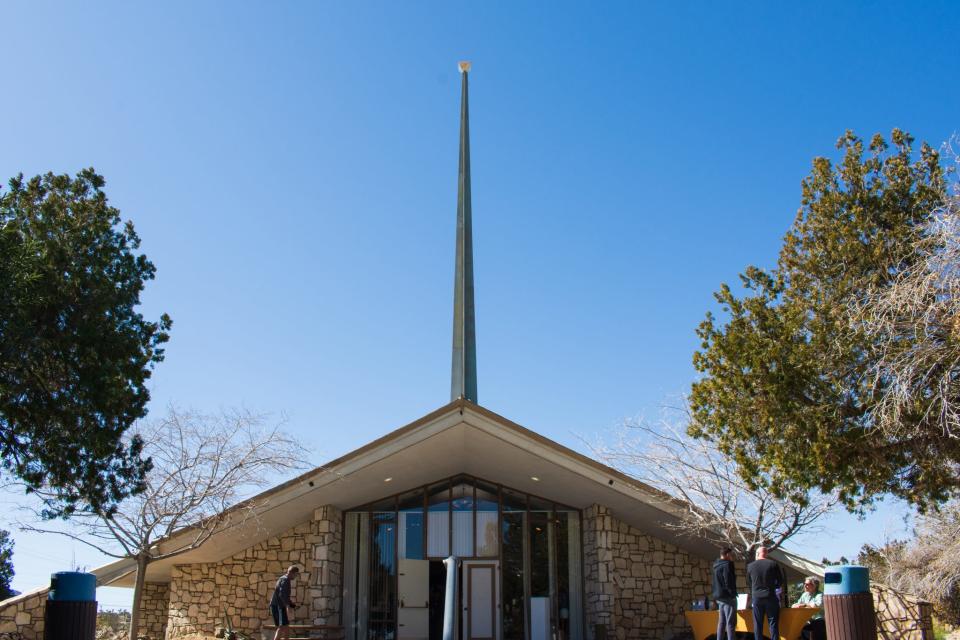
During a Modernism Week tour on Monday, ticketholders were received in the sanctuary, which features a triangular entrance and tall steeple. Inside, a display of vintage photographs, magazine articles, one of Dingle's books and other items were on display. An old informational documentary about the property and Dingle's spiritual teachings played on a screen above the pulpit.
The tour featured a walk through the courtyard, cottages, amphitheater and Friendship Hall, a large building on the opposite side of the property.
Here's what we learned from the guided tour.
What is mentalphysics?

According to the Joshua Tree Retreat Center, Dingle, who also went by Ding Le Mei, founded mentalphysics on self-realization based on his experiences in China, Tibet and India. He was one of the first Westerners to enter a Tibetan monastery. The practices are rooted in meditation and breathing exercises, diet control and and universal laws. During the tour, it was explained as a mystical branch of Christianity and a sign on the property featured the name "First Church of Mystic Christianity."
Dingle, who lived in a house on the property, died in 1972.
Frank Lloyd Wright passed on designing the buildings
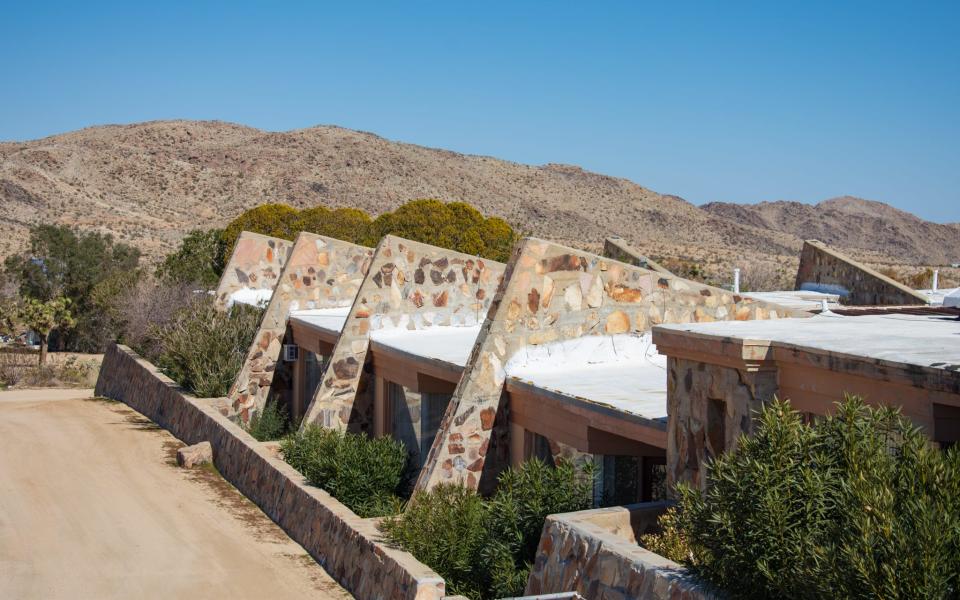
Dingle was an admirer of architect and designer Frank Lloyd Wright and had him in mind for designing the buildings on the campus, but he declined for unspecified reasons. Wright, who was 80 at the time, was designing his last major project at the time, the Solomon R. Guggenheim Museum in New York.
His son, Lloyd Wright, took the job and was building his own brand of California design and "organic architecture," a term his father used in 1913 to describe connecting human dwellings with natural landscapes. The buildings all include features that appear to be coming out of the ground and coincide with Dingle's spirituality and specifications.
But Lloyd Wright knew Dingle was running out of money, which is why the sanctuary was built by O.K. Earl. The architect of the hexagonal structure is unknown, but it was said to be based one of Lloyd Wright's previous designs. Earl also worked for the Finnish-American architect Eero Saarinen and many of the features appear to be a combination of both architects.
The meaning behind the triangles
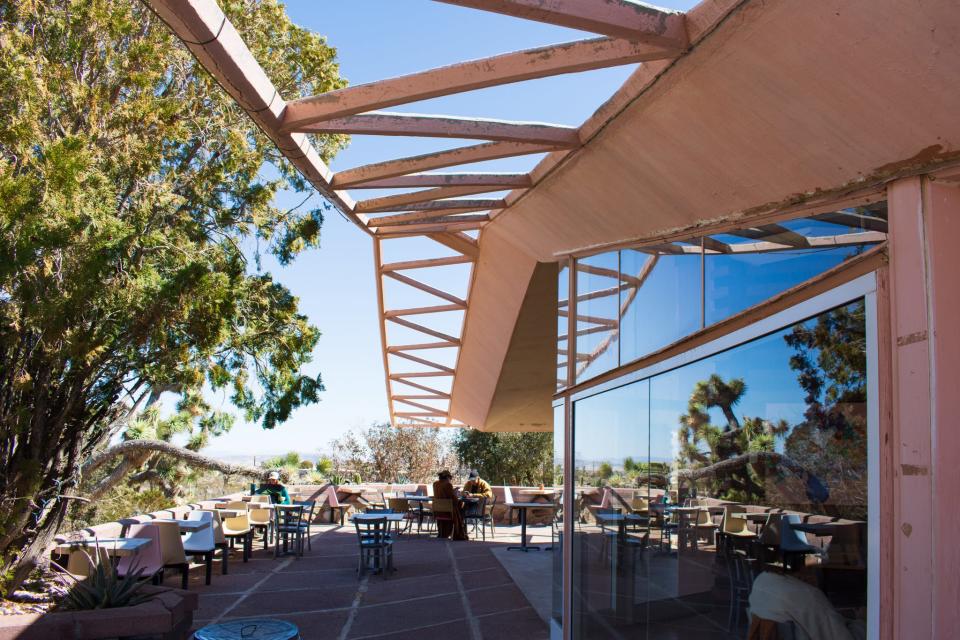
While walking the campus, visitors will notice there are plenty of triangles, which Dingle believed represented mind, body and science. Also, there are no right angles in any of Lloyd Wright's designs, and the masonry is at a 60-degree angle. There are also mitered windows in some places, which is an intriguing feature because there's little support during earthquakes.
The exterior walls throughout the campus feature large stones, which required building a form, placing flat stones inside of it, adding cement, removing the form to clean off the surfaces of the stones and then putting them back in to ensure sturdiness and appeal.
All of these design specifications weren't cheap, and as docents say during tours, "Lloyd Wright was not an inexpensive architect to hire."
For many years, the original entrance of the property featured a pyramid. At night, an illuminated neon sign that said "mentalphysics" would glow along the dirt road that later became the Twentynine Palms Highway.
There are energy vortices on the campus
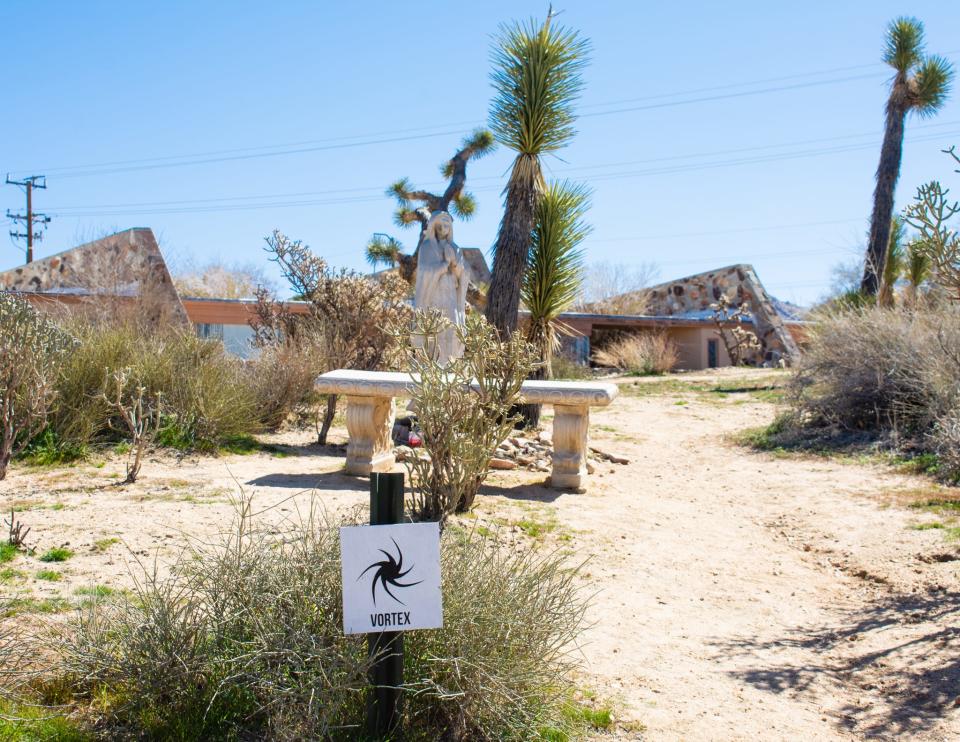
If you find yourself walking through the campus and notice a shift in the air, strange pressure in various parts of the body or a general feeling of heaviness, you might have missed a sign that says "vortex." There are 18 vortices at the Joshua Tree Retreat Center, and many believe these spots promote feelings of harmony, personal reflection and physical healing.
A host of other locations around the world have these alleged energy vortices, such as the Great Pyramid of Giza in Egypt, Stonehenge in Wiltshire, England and Sedona, Arizona. Visitors flock to these sites to not only witness their beauty, but to meditate and hopefully experience healing of some sort.
The center has hosted retreats by other groups
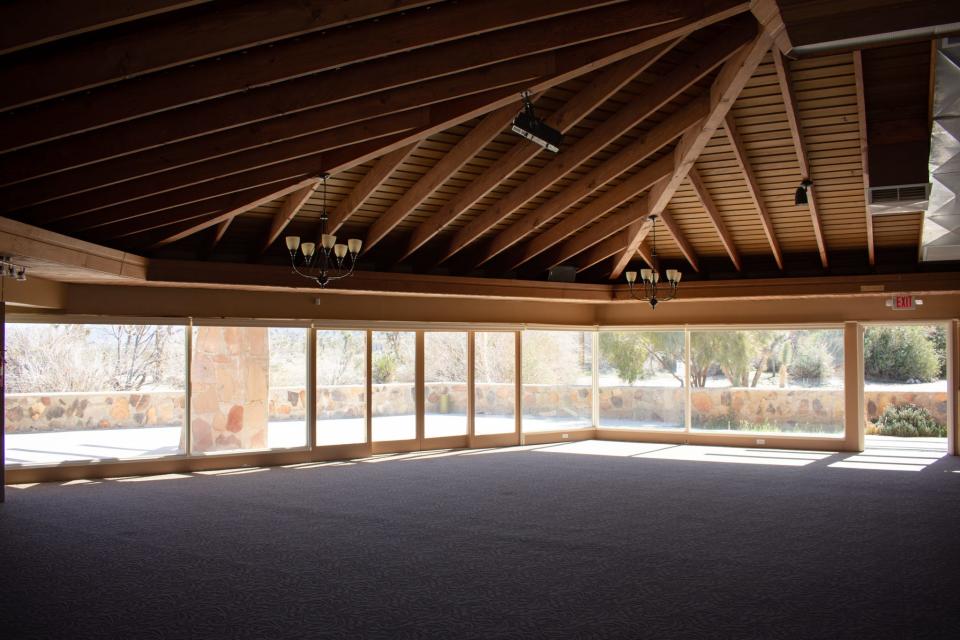
The Joshua Retreat Center has hosted retreats for a myriad of groups. Buddhist practitioner and Spirit Rock Meditation Center founder Jack Kornfield has hosted meditation retreats at the center for 25 years. Spiritual teachers such as Ram Dass, Swami Vishwananda and many others have also held events on the property.
In 2009, Sridhar Silberfein, a follower of Asian-Indian religious teacher Swami Satchindananda, created Bhakti Fest, a nonprofit with a mission to help people grow through yoga, meditation, sacred singing and workshops. Renowned doctor and author Deepak Chopra spoke at the festival in 2018 and there was also a more feminine-focused event for women in the spring, Shakti Fest.
From 2016 to 2017, the campus hosted the Desert Daze music festivals.
After nearly a decade, a decision was made to move Bhaki Fest after the retreat center plowed a corner of desert landscape to host other types of festivals, which caused friction in the community, Silberfein told The Desert Sun in 2019. Bhakti Fest moved to Twentynine Palms that year and this year's festival in September will be at the Joshua Tree Lake RV and Campground.
The organization is seeking donations to restore the campus

Even though many of the structures feature distinct mid-century design and the original construction is intact, the obvious reason for the center's slowly weathering appearance is lack of funding. Signs of this are seen throughout the campus, including damage on the triangular frames of the Caravansary building from a foam used to waterproof the roof. Aside from paint and general cosmetics, many of the unique features of the buildings don't meet modern building codes and are protected by historical preservation.
The Joshua Tree Retreat Center is not a resort and operates as a nonprofit spiritual organization. In 2021, the organization launched a giving campaign and has a second-year goal to raise $500,000 for restoration projects.
Previous reporting by Desert Sun reporter Ema Sasic was included in this report.
Desert Sun reporter Brian Blueskye covers arts and entertainment. He can be reached at [email protected] or on Twitter at @bblueskye.
This article originally appeared on Palm Springs Desert Sun: Modernism Week 2023: This retreat center was built on 'mentalphysics'
